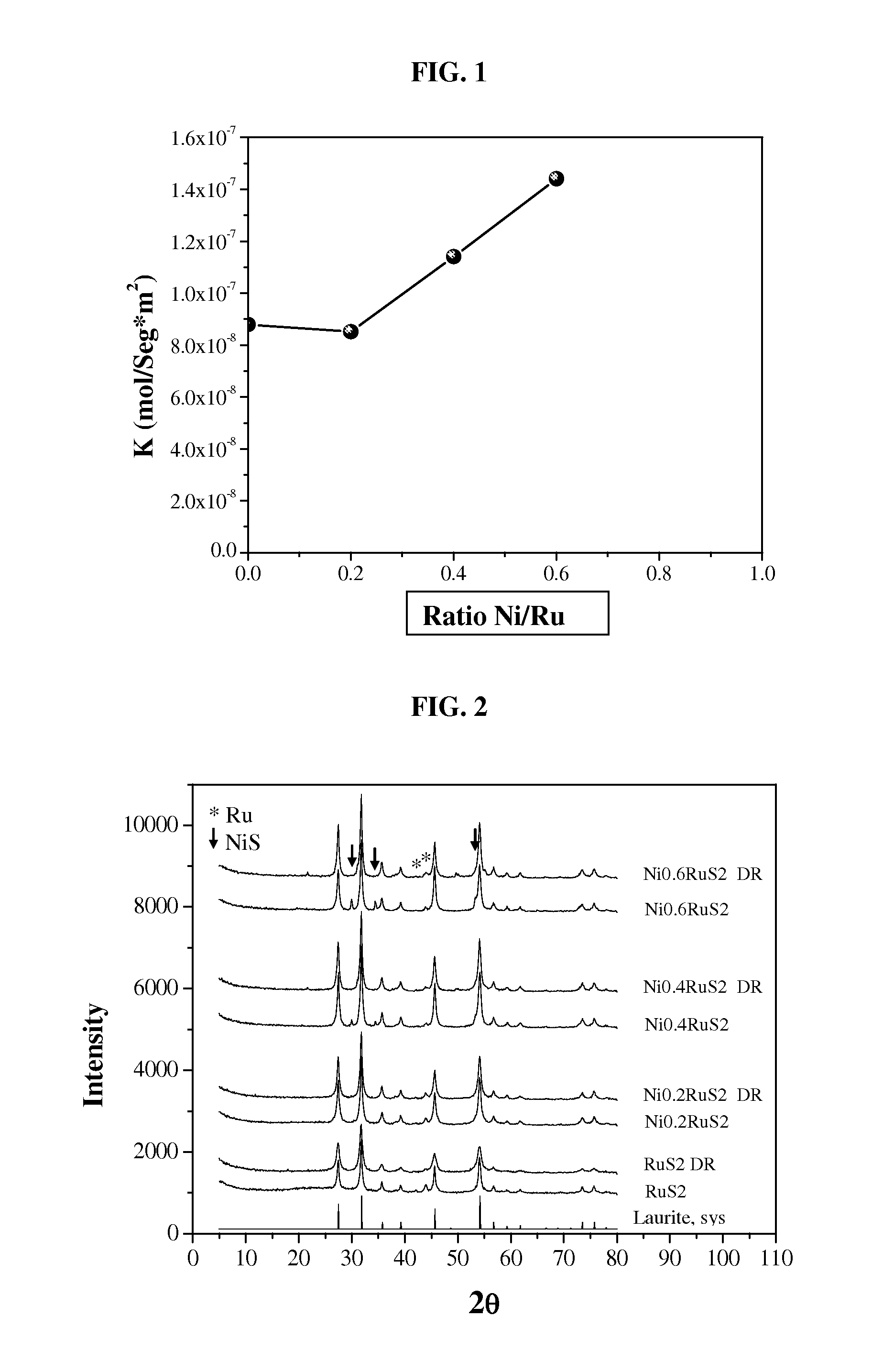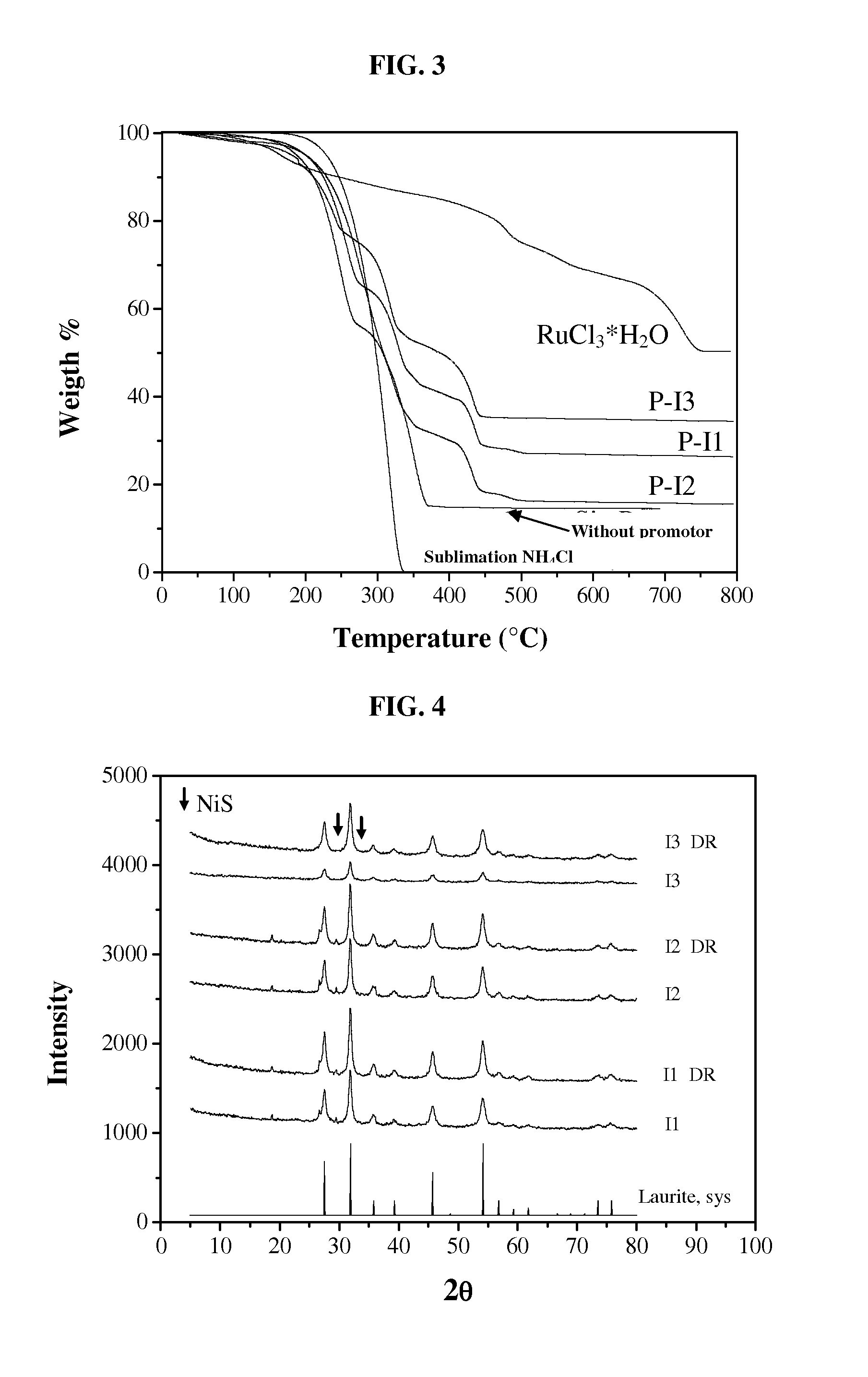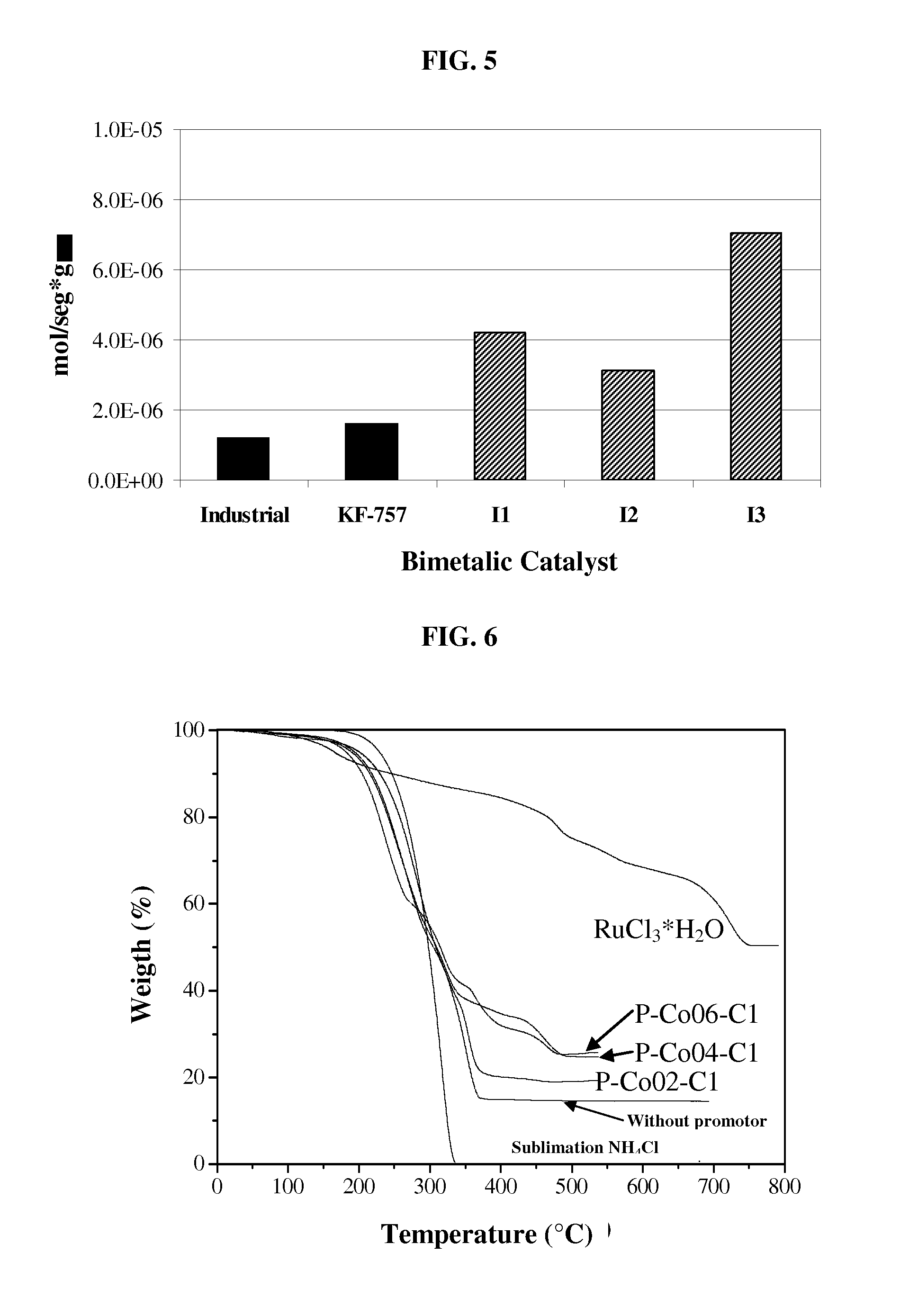Unsupported and supported promoted ruthenium sulfide catalyst with high catalytic activity for hydrocarbon hydrotreatments and its method
- Summary
- Abstract
- Description
- Claims
- Application Information
AI Technical Summary
Benefits of technology
Problems solved by technology
Method used
Image
Examples
example 1
Synthesis of Unsupported Ruthenium Catalysts Promoted with Nickel Sulfide (MW / RuS2) by Wet Impregnation
[0058]In two beakers, ruthenium chloride and ammonium chloride are dissolved separately, the ammonium chloride is added to the ruthenium chloride solution with constant mechanical agitation between 100 and 700 rpm for 30 minutes and later acetone is added, the solution is kept in constant mechanical agitation between 100 and 700 rpm by another 30 minutes and 3 hours in rest, later the precipitate is filtered and washed with acetone. The precursor is decomposed and activated in a tubular furnace at 400° C. with heating ratio of 5° C. / min for 2 hours in a flow of H2 / H2S (85:15% vol). Nickel nitrate (Ni / Ru=0.1, 0.2 and 0.6) is dissolved in the minimum amount of water (1 ml / 100 mg of nickel nitrate) and added by dripping to the ruthenium sulfide, the catalyst is dried in an oven at temperatures of 60-150° C., preferably 90 to 120° C. for 1.5 hours and then activated in a tubular furnac...
example 2
Synthesis of an Unsupported Ruthenium Sulfide Catalyst Promoted with Nickel (MW / RuS2) W=0.6 by the Method of Co-Synthesis 1
[0059]In two beakers, ruthenium chloride and nickel chloride are dissolved separately, the nickel chloride is added to the ruthenium chloride solution with constant mechanical agitation between 100 to 700 rpm, ammonium chloride in solution is added to the mixture, the solution is kept 30 minutes in constant mechanical agitation for 30 minutes and later acetone is added, the solution is kept again in constant mechanical agitation by another 30 minutes and 3 hours in rest, later the precipitate is filtered and washed with acetone. The bimetallic precursor is decomposed and activated in a tubular furnace at 400° C. with heating ratio of 5° C. / min for 2 hours in a flow of H2 / H2S (85:15% vol). FIG. 3 shows the thermogram obtained by thermogravimetric analysis (TGA) of the bimetallic precursor P-I1 obtained prior to the activation, FIG. 4 shows the XRD pattern of the ...
example 3
Synthesis of an Unsupported Ruthenium Sulfide Catalyst Promoted with Nickel (MW / RuS2) W=0.6 by the Method of Co-Synthesis 2
[0060]In two beakers, ammonium chloride and nickel chloride are dissolved separately, the ammonium chloride is added to the nickel chloride solution with constant mechanical agitation between 100 to 700 rpm, ruthenium chloride in solution is added to the mixture, the solution is kept 30 minutes in constant mechanical agitation for 30 minutes and later acetone is added, the solution is kept again in constant mechanical agitation by another 30 minutes and 3 hours in rest, later the precipitate is filtered and washed with acetone. The bimetallic precursor is decomposed and activated in a tubular furnace at 400° C. with heating ratio of 5° C. / min for 2 hours in a flow of H2 / H25 (85:15% vol). FIG. 3 shows the thermogram obtained by thermogravimetric analysis (TGA) of the bimetallic precursor P-I2 obtained prior to the activation, FIG. 4 shows the XRD pattern of the c...
PUM
| Property | Measurement | Unit |
|---|---|---|
| Temperature | aaaaa | aaaaa |
| Temperature | aaaaa | aaaaa |
| Temperature | aaaaa | aaaaa |
Abstract
Description
Claims
Application Information
 Login to View More
Login to View More - R&D
- Intellectual Property
- Life Sciences
- Materials
- Tech Scout
- Unparalleled Data Quality
- Higher Quality Content
- 60% Fewer Hallucinations
Browse by: Latest US Patents, China's latest patents, Technical Efficacy Thesaurus, Application Domain, Technology Topic, Popular Technical Reports.
© 2025 PatSnap. All rights reserved.Legal|Privacy policy|Modern Slavery Act Transparency Statement|Sitemap|About US| Contact US: help@patsnap.com



